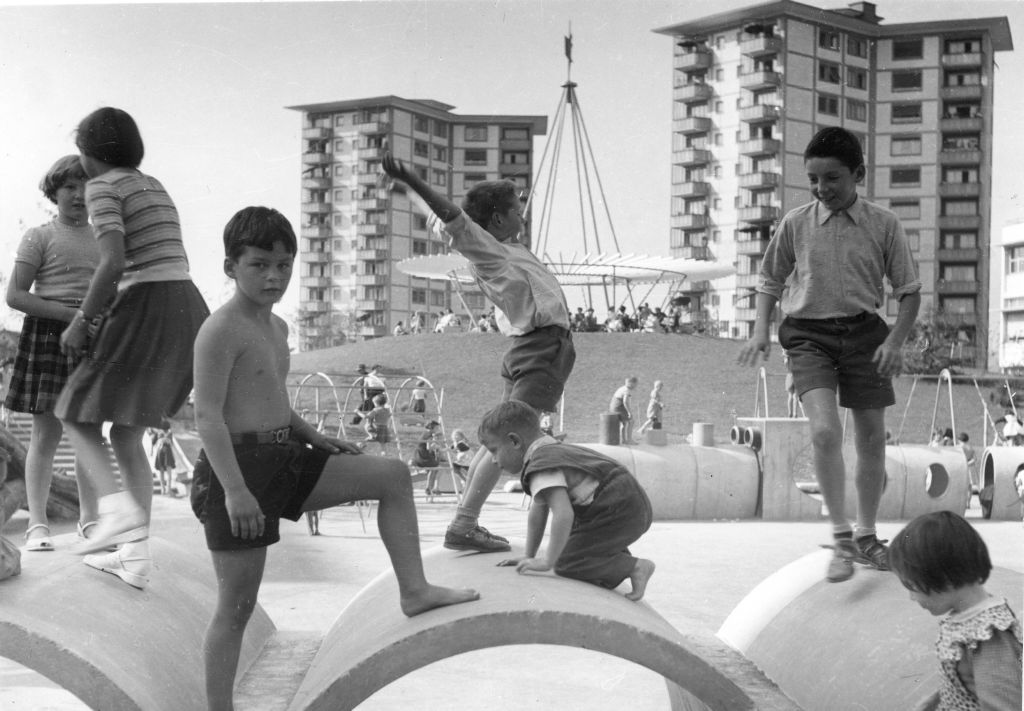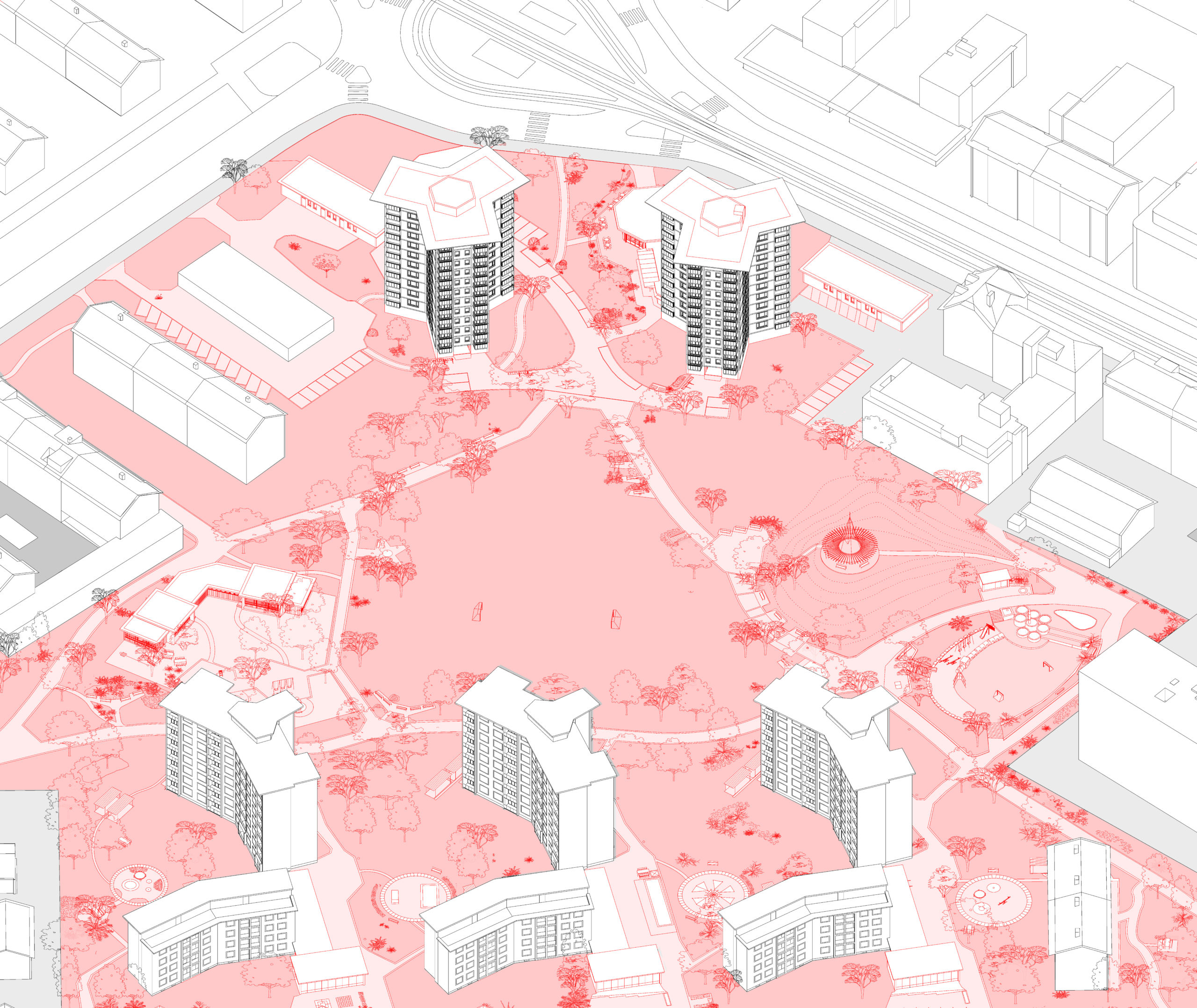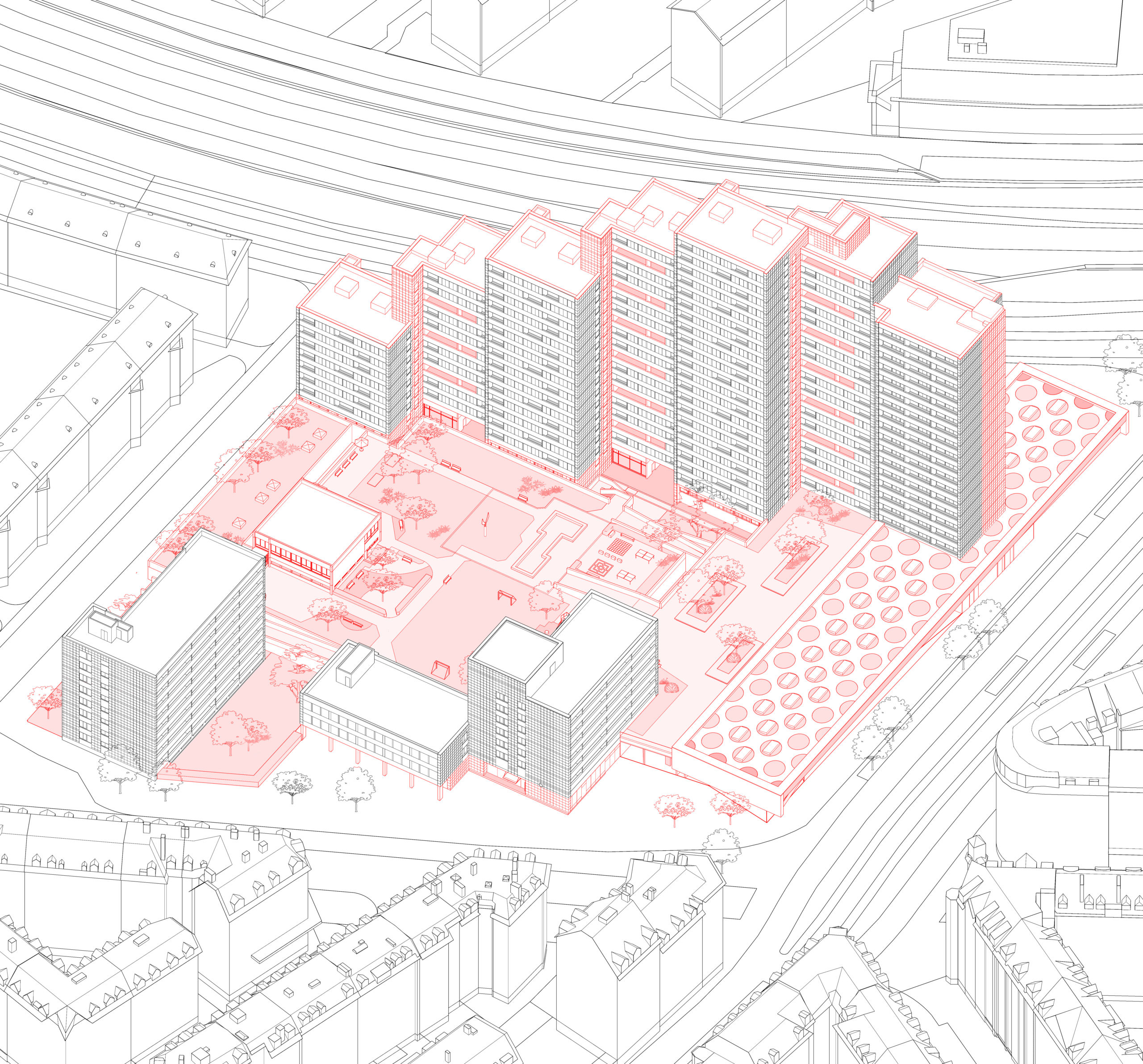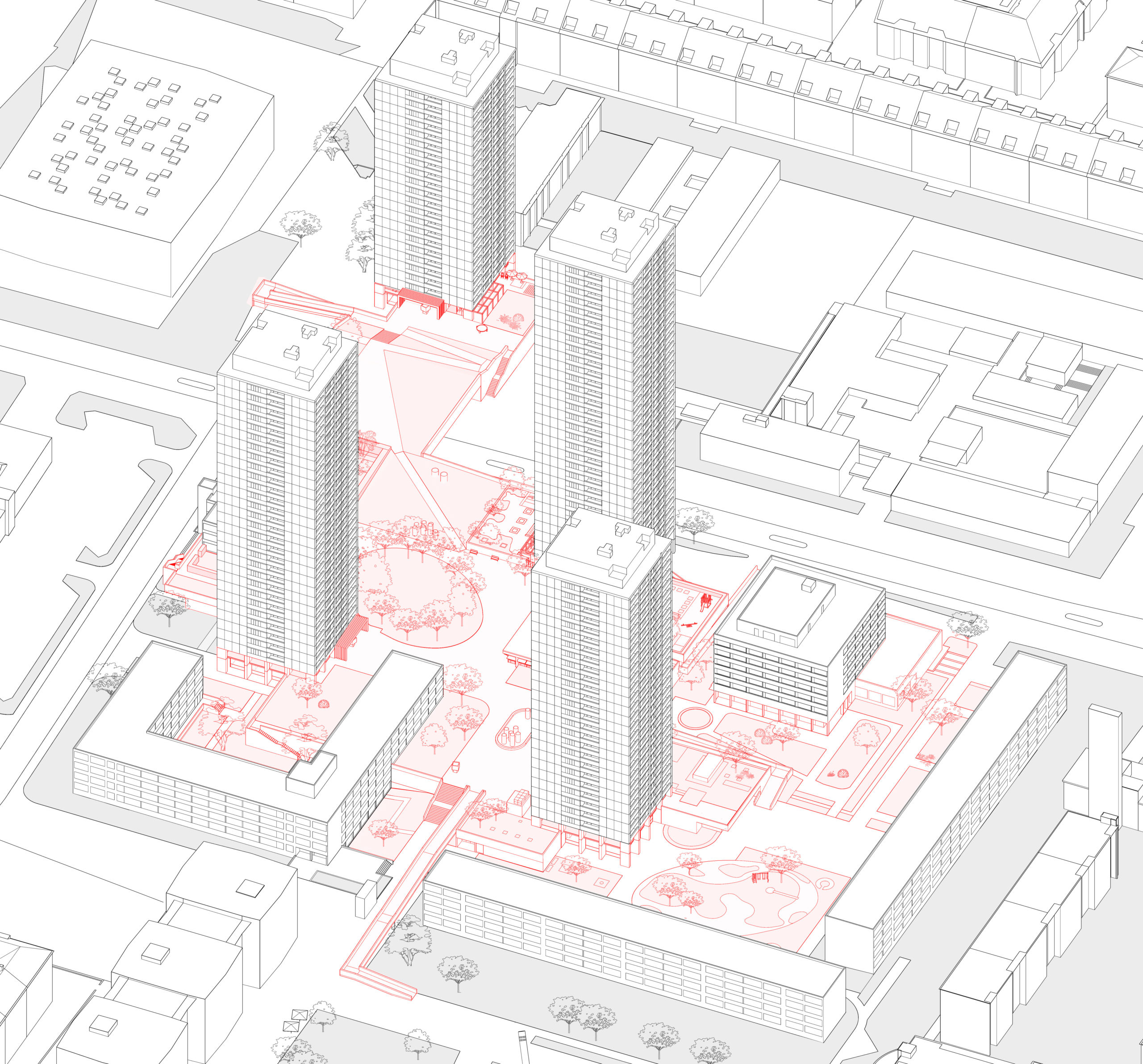Housing commons in High-rise Municipal housing in Zurich

In the postwar period high-rise and municipal housing in Zurich were corelated. The City promoted high-rise as a typical top-down strategy for state housing. Indeed, municipal housing was the main catalyzer of high-rise boom in the postwar decades. On the one hand, the typology high-rise poses special problem to what we normally refer to housing commons, which is the lack of collective space and facilities. On the other hand, different form the one usually developed by private investor, such an issue is consciously addressed in these municipal projects. As a typology promoted by the municipality for public benefit, two concepts about high-rise are intertwined: it densifies the up, tries to solve housing shortage efficiently and facilitate social mixing; Meanwhile, it also loosens the down, where public facilities, infrastructure and green space will be provided on the ground. However, state housing causes its own tension between the public and the collective domain because it usually tries to integrate public function and infrastructure with higher priority. Collective facilities are often suspended at the early stage when budget is limited and the tension is raised between serving the larger city and benefiting community itself.
Amongst all the municipal high-rise projects built between the 1950s and 1980s. Three municipal cases- Heiligfeld III (1955), Lochergut (1966) and Hardau II (1978) – merit investigation in terms of housing commons in detail because of their historic statues, representative typology and location in the city. The common pool resources here could be ground landscape, common facilities (such as kindergarten, community center, store…), circulation and etc. In the past decades, these projects are constantly contested by the public discourse and its inhabitant, and they also have experienced several renovation and modification. They have fully proven the necessity of housing commons and could provide fruitful experience for a catalog of these collective element and their spatial organization in high-rise housing.
However, in recent year these municipal high-rise housing models are largely forgotten. It’s necessary to learn from them again and reconsider this model as a possible solution for solving the housing problem. As the inevitable choose of densification, high-rise is still expected to be an important typology in the urban development in the near future and its shortcoming muss be overcome. Sufficient commons will be the necessary caution to approach it.
Eisinger, Angelus. Städte bauen : Städtebau und Stadtentwicklung in der Schweiz 1940-1970. Zürich: gta Verlag, 2004.
Fehlmann, Deborah. Zürich denkt groß : die städtische Wohnsiedlung Hardau II von Max P. Kollbrunner. Zürich: ETH, 2016.
Kurz, Daniel. “Die Feuerleiter als Massstab.” Wohnen. 77.4 (2002): p9-12.
Schneider, Eveline et al. Lochergut – ein Portrait. Luzern: Quart Luzern, 2019.
Steiner, Albert Heinrich, and Werner Oechslin. Albert Heinrich Steiner: Architekt – Städtebauer – Lehrer. Zürich: GTA Verlag, 2001.
Image 1 –
Overview of housing commons (red) in Heiligfeld III
Xingyu He (2021)

Image 2 –
Overview of housing commons (red) in Lochergut
Xingyu He (2021)

Image 3 –
Overview of housing commons (red) in Hardau
Xingyu He (2021)
